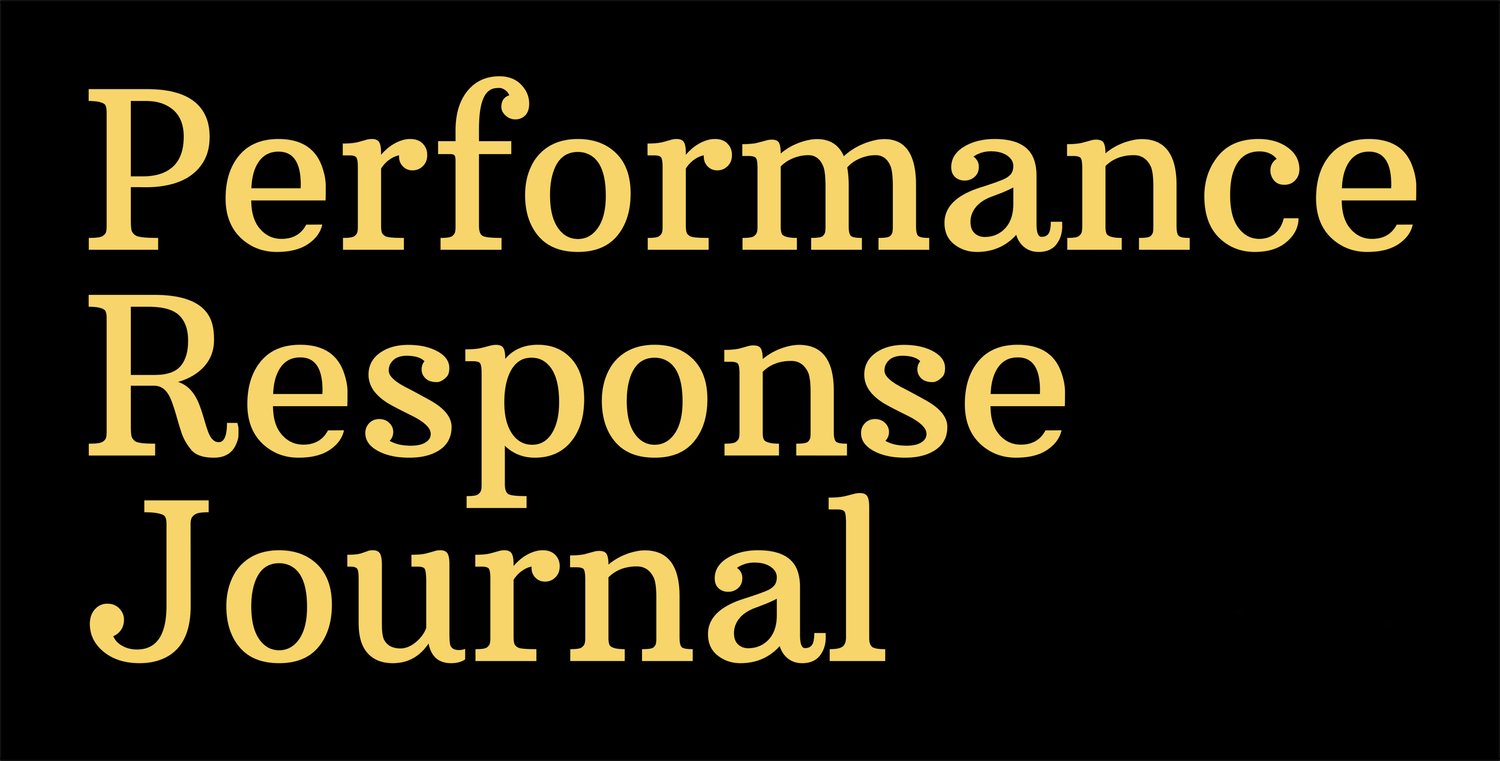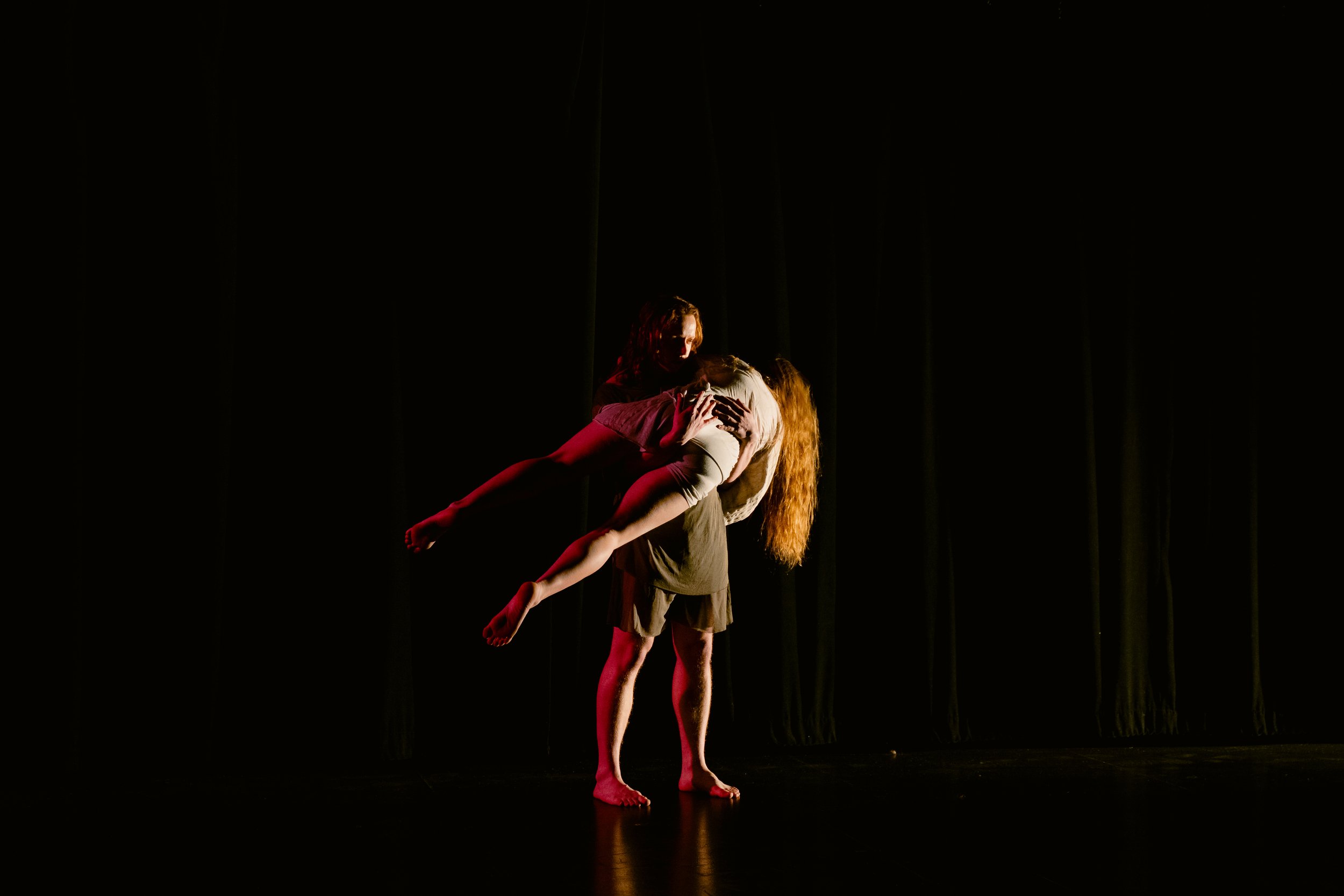Bearing Up, Spiraling Down: a response by Carole McCurdy
Image captured by Ricardo Adame
Heavy Objects (and light movements)
Choreography: Drew Lewis
Performers: Maddy Joss, Drew Lewis, and Isabella Limosnero
Costumes: Jeremy Miller
Rehearsal Assistant: Hannah Marcus
Visual Media: Marcus Aubin and Chloe Hamilton
Presented as part of the work around series curated by Kara Brody & Amanda Maraist through Steppenwolf’s LookOut Series.
February 11-13, 2023
Steppenwolf 1700 Theater
**************************************
“It is exhausting living in a population where people don't speak up if what they witness doesn't directly threaten them.”
― David Wojnarowicz, Close to the Knives
And yet sometimes bearing the weight of our own selves and bodies can seem as hard as bearing the weight of others. This sensation recurs throughout Heavy Objects (and light movements), a dance piece by Drew Lewis.
The first dancer to enter, Isabella Limosnero, holds a long moment of relevé (not a ballet position, just up up up). Only after a prodigious amount of time do they begin to teeter, as something ripples through their body and they excruciatingly, slowly crumple to the floor. Limosnero’s downward movement plants the seed from which the piece will grow.
A duet appears (Maddy Joss and Drew Lewis), one body push-pulling the other out into the space, bare feet squealing on the stage, as Limosnero shrivels. This partnering will run throughout the piece, with variations on lifts, leans, and embraces. Many components of the partner work seem influenced by contact improvisation, but rather than a cliché of random rolling we see a continual process of negotiating care. How to bear the ungainly weight of this vulnerable human body with concern and maybe even grace, maybe even humor?
These duets rely on intense contact, but rather than battle or tussle we see a power dynamic between allies, a sense of interdependency where the balance is continually tipping. It’s mainly in Limosnero’s solo moments that overt struggle emerges. Limosnero repeatedly bears witness to the duets, stepping off to a distance and holding still. There are moments in which human beings sustain a heavy awareness of a situation without believing they’re able or willing to change it. The struggle goes inside.
Some duet moments feature one body puppeteered by the other. At one point the duet executes a common partnering exercise from dance classes: one person holds passive, allowing the other to reposition parts of their body and then holding that position until nudged into the next position. Is this interdependency or dependency? Together they cross the floor in an entwined walk, locomoting as one. They “fly” each other, acroyoga-style, then collapse.
The soundtrack, too, is at times subject to suspension and drag, getting laggy at moments. Time has its own weight.
Image captured by Ricardo Adame
But not all here is weight and gravity. The most sparkly moment of lightness happens as the soundtrack becomes enchanted, with a tinkling piano reminiscent of Saint-Saëns’s Aquarium, and the performers simply spin, like kids seeking the high of dizziness.
Lewis’s program notes let us know that the piece is “a reflection on the life and work of artist and activist David Wojnarowicz,” who died of AIDS in 1992 after producing a body of work that rocked the New York scene and beyond, among other things pointing out government and social neglect and destructiveness.
The image Wojnarowicz is likely best known for, Untitled (Buffaloes) from 1988, shows a herd of buffalo driven off a cliff, plunging headlong into the abyss. What he photographed was the background painting of a diorama in the Smithsonian National Museum of Natural History. The result is an icon of pending and unending disaster brought on by human systems.
But appreciating Heavy Objects is not dependent on a familiarity with Wojnarowicz and his work. Toward the close of the piece, which is laden with the intimacy of arduous contact, the soundtrack features an intimate and movingly humble and self-aware section of Wojnarowicz’s cassette diary. Wojnarowicz talks/complains about his compulsion to create mental “small fictions” to allow himself to ignore the advancing symptoms of AIDS, to face the progressive loss of friends and the loss of the embodied self he’s known.
This is heartbreaking, but his warmth and wit also brings a lift to what we’re hearing. Resurrecting this warm deep voice sends us a reading of what we’ve seen onstage and what we’ve maybe tried not to see.
The dancers are not a cast of characters, but perform and share roles that could simply reflect the laws of physics. The movement is all about mass stacking up for a time, solidly or precariously, and then succumbing to gravity or structural fatigue. But without forcing a message to be drawn from the work, Lewis makes the metaphors and questions clear: we feel the strength and fragility of the human body, the importance of intimate care, and the equal importance of stepping back to gain perspective on who’s rising and who’s falling in the current human crisis. What is sustainable and for how fucking long?
Lightness is its own burden and danger. There’s the awkward sense of obligation to make yourself light via accommodation and assimilation. There’s the vertiginous sense that you must return to your own groundedness. And: you might fall. It’s a struggle to not let weightlessness disappear you.
Image captured by Ricardo Adame
Wojnarowicz, despite his culture’s disdain, did not make himself light. Not only did he allow himself to show the struggle (his own and that of others) but he allowed himself to rage, to wield a red-hot poker, to cast a deathly cold eye. Both artist and activist, his work depicted the burning house, the tornado, the falling man. He held himself up as long as he could, all the while showing how the world is collapsing.
Now he is a light.
**************************************
Carole McCurdy is a Chicago-based artist whose movement-based work addresses grief and anxiety, duty and resistance, and the absurd mysteries of embodiment. She has performed at spaces including the Chicago Cultural Center, Epiphany Dance, Links Hall, Hamlin Park, High Concept Laboratories, Defibrillator Gallery, and Movement Research (NY). She received a 2016 Lab Artist award from the Chicago Dancemakers Forum and was a Fall 2016 Sponsored Artist at High Concept Laboratories, Chicago. She created and directed an ensemble piece, WAVER, with support from CDF, HCL, and 3Arts Chicago, and most recently created Just Passing Through (2021–22), a video, installation, and performance shown at Roman Susan-Art gallery.




